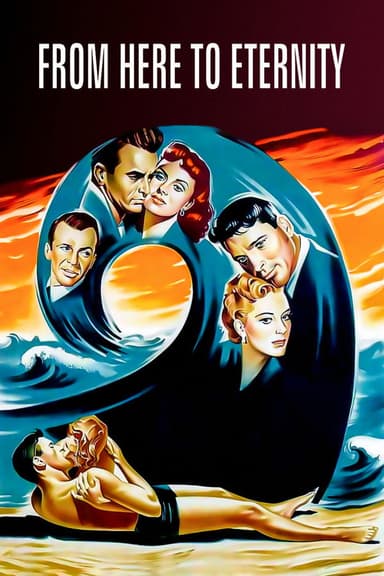
Ship of Fools
1965 • Drama, Romance • NR
Passengers on a ship traveling from Mexico to Europe in the 1930s represent society at large in that era. The crew is German, including the ship's Dr. Schumann, who falls in love with one of the passengers, La Condesa. A young American woman, Jenny, is traveling with the man she loves, David. Jenny is fascinated and puzzled by just who some of the other passengers are.
Runtime: 2h 29m
Why you should read the novel
Katherine Anne Porter's novel "Ship of Fools" offers a profound and immersive exploration of human nature, prejudice, and the societal flaws of pre-WWII Europe, all set for a captivating journey at sea. By reading the novel, you experience Porter's sharp character insights and psychological depth, as she skillfully weaves each passenger’s backstory, motivations, and inner conflicts into the tapestry of the voyage. Her evocative prose and nuanced storytelling create a rich, textured portrait of an era fraught with tension and transformation.
The novel invites you to reflect on enduring questions about morality, complicity, and the dangers of indifference. The ship’s enclosed world serves as a powerful metaphor for civilization itself, engaging the reader in a meditation on human folly and collective responsibility. Porter’s detailed exploration of every character’s flaws and sympathies is far more intricate and subtle than any visual adaptation can portray.
Reading "Ship of Fools" unlocks layers of meaning that unfold slowly, rewarding patient readers with every page. The book remains a timeless literary achievement, and engaging with the original text will offer you an intellectual and emotional experience that lingers well after the last page—far beyond what the film adaptation can achieve.
Adaptation differences
One of the main differences between the movie and the novel lies in the treatment of characters and their psychological complexity. While the film skillfully portrays the ensemble cast, it necessarily condenses or omits certain backstories and internal monologues, leading to a more streamlined, visually-driven narrative. The novel, by contrast, allows deep dives into the inner lives, thoughts, and backgrounds of each character, revealing their prejudices, fears, and desires in much greater detail.
Another substantial difference is the handling of themes and overall tone. The movie focuses strongly on the escalating tensions aboard the ship and the interpersonal drama among the main passengers. Porter's book, however, is more concerned with subtle social critiques and philosophical musings, offering a nuanced commentary on the moral deterioration of pre-war European society. The film simplifies some of these themes to make them more accessible to a broader audience, sacrificing some of the novel’s ambiguity and complexity.
The pacing and structure also differ notably. The novel's episodic, interwoven chapters draw the reader into a slow-building sense of inevitability and menace, mirroring the gradual approach to disaster on both personal and societal levels. The film, in adapting this structure for a cinematic format, reshuffles and abbreviates several subplots, sometimes resulting in a loss of narrative cohesion and suppressing some minor characters' significance.
Finally, Porter's distinctive prose and narrative voice are lost in translation to the screen. The author’s wry observations and evocative descriptions give the novel its lasting impact and depth, qualities that are difficult to replicate in dialogue and visuals alone. While the film succeeds as a mid-century drama, it inevitably streamlines the original’s literary artistry, limiting the scope for introspection and the exploration of the ship as both a literal and symbolic vessel of human folly.
Ship of Fools inspired from
Ship of Fools
by Katherine Anne Porter









